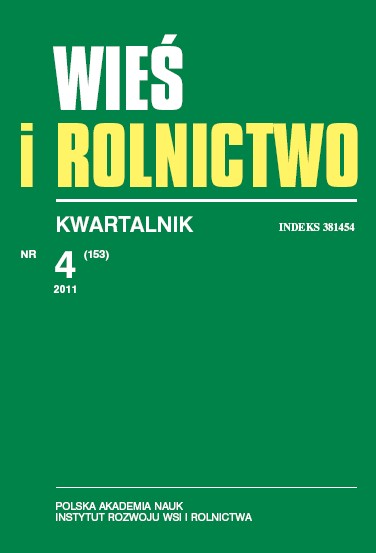Economic effects of increasing concentration of population and economic activity on different geographical scales
DOI:
https://doi.org/10.53098/wir.2011.4.153/05Keywords:
economic geography, territorial development, economic concentration, demographic density, urbanization, regional integrationAbstract
The paper discusses development problems and challenges posed by the increasing concentration of population and economic activity on the international, national, regional and local scale. The processes of urbanization and concentration of population and economic activity in development centers and, especially, large cities progress dynamically until the moment that the income per head reaches the level of about USD 3,500. Then, they slow down and spread into the neighboring areas. Demographic concentration is faster than economic concentration and the pace and scale of convergence processes vary. The convergence of consumption indicators takes place faster than the convergence of any other economic development indicators, and the convergence of the standards of living as well as the concentration of economic activity occur most swiftly on the local scale. In step with economic growth location becomes less crucial for households but more and more important for businesses. A suitable instrument for measuring demographic and economic densities is the agglomeration index.References
Bairoch P., Goetz G., 1986: Factors of Urbanization in the Ninething Century Developed Countries. A Descriptive and Econometric Analysis. „Urban Studies” 23 (4): 285–305. DOI: https://doi.org/10.1080/00420988620080351
Chandler T., Fox G., 1974: Three Thousand Years of Urban Growth. Academic Press, New York, London.
Chomitz K.M., Buys P., Thomas T.S., 2005: Quantifying the Rural Urban Gradient in Latin America and Caribbean. Policy Research Working Papers 3634, World Bank Washington, DC. DOI: https://doi.org/10.2139/ssrn.757164
Nelson A., 2008: Accessibility Model and Population Estimates. Background Paper for the WDR 2009.
Nordhaus W.D., 2006: Geography and Macroeconomics: New Data and New Findings. Proceedings of the National Academy of Sciences 103 (10): 3510–3517. DOI: https://doi.org/10.1073/pnas.0509842103
Regions at a Glance, 2007. OECD, Paris.
Satterthwaite D., 2007: The Transition to a Predominantly Urban World and its Underpinnings Paper presented at the UNU-WIDER Workshop London, October 19.
Territorial Reviews: Competitive Cities in the Global Economy, 2006. OECD, Paris.
World Urbanization Prospects: The 2005 Revision UN, Development of Economic and Social Affairs, Population Division, 2006. New York.
World Development Report, 2009. The World Bank. Reshaping Economic Geography, Washington.
Downloads
Article file downloads
Pages
How to Cite
Issue
Section
License
Copyright (c) 2011 Wieś i Rolnictwo

This work is licensed under a Creative Commons Attribution 4.0 International License.










